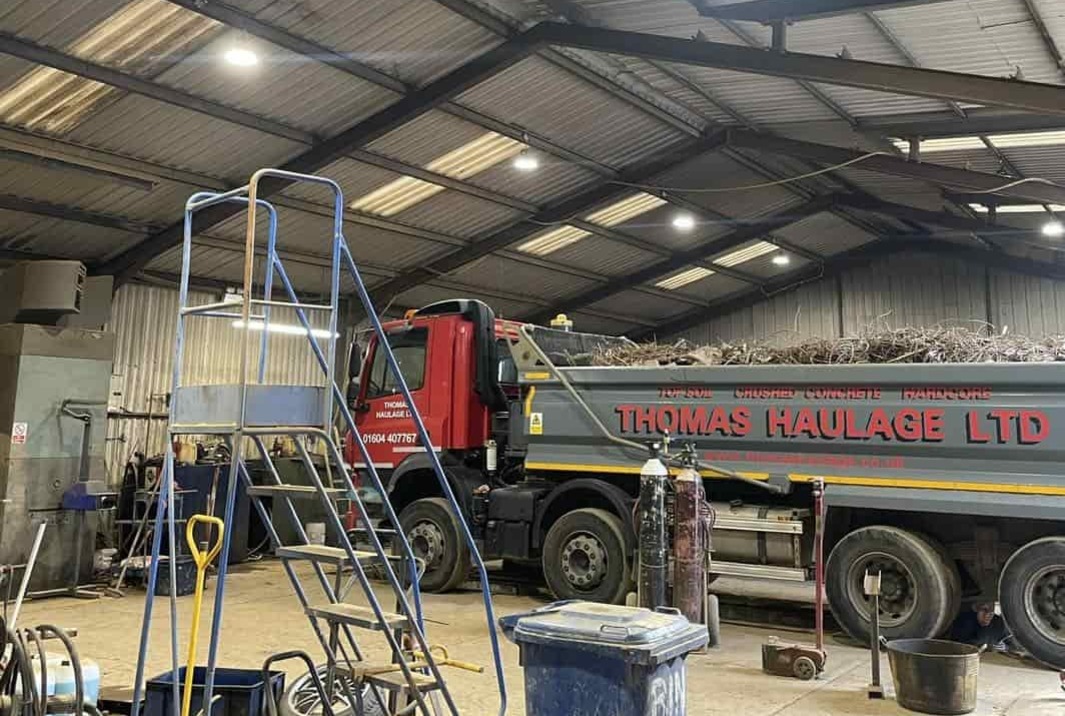Lighting in workshops
Posted on 4th July 2023

We were very pleased to work on the amazing transformation of this workshop for our long standing haulage client.
The mechanics’ workspaces are now flooded with light to improve their working conditions. There’ll also save on their energy bills, which is important these days.
While we were there, we serviced the emergency lighting too.
Lighting requirements at work
Poor lighting in the workplace can affect performance and employee health.
Different levels of lighting are needed for different types of work. Close, accurate work such as soldering needs higher light levels than an office corridor, for example. For people’s overall comfort lighting colour, contrast and glare are also considerations.
Good lighting design makes sure people can comfortably work in their environment. Ideally architects and designers include availability of natural and artificial light at an early stage in a commercial building project.
Key principles in commercial lighting
Employers can take some simple steps to make sure people have enough lighting at work.
If your employees carry out different activities they will need control over their local lighting. For example, in a process control room an engineer might need 300 lux to see everything clearly. However, to study a wiring diagram, they might also need a desk lamp.
Studies have shown control of local lighting in open plan offices can increase job satisfaction and decrease stress.
Light is often reflected by surfaces such as display screens which can cause glare. Blinds, adjustable light sources and glare filters can help.
Artificial lights come in various colours, sometimes making diagrams and coloured text difficult to read.
It’s also worth remembering that lighting is designed when work spaces are empty. People, equipment and vehicles, for example, can all cast shadows. Some areas like pathways in car parks need specific lighting to keep people safe.
Tagged as: Commercial electrical installations, Lighting design
Share this post:




